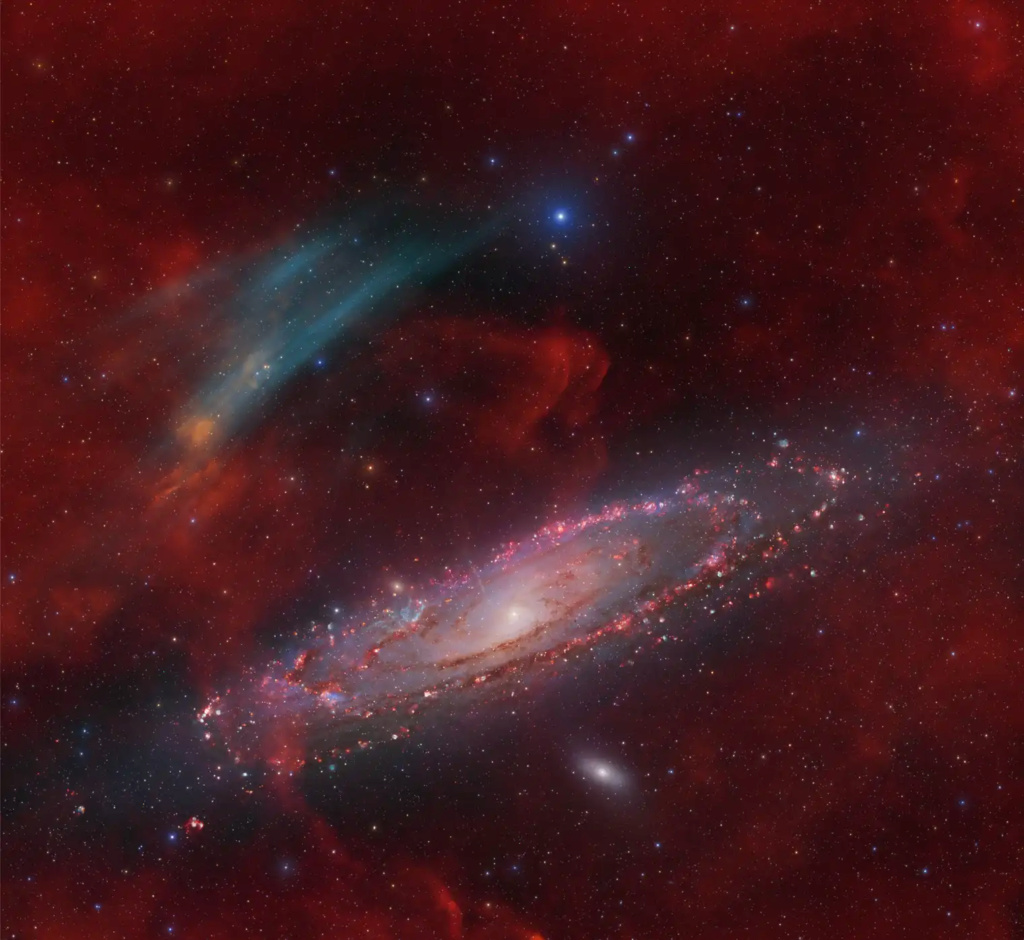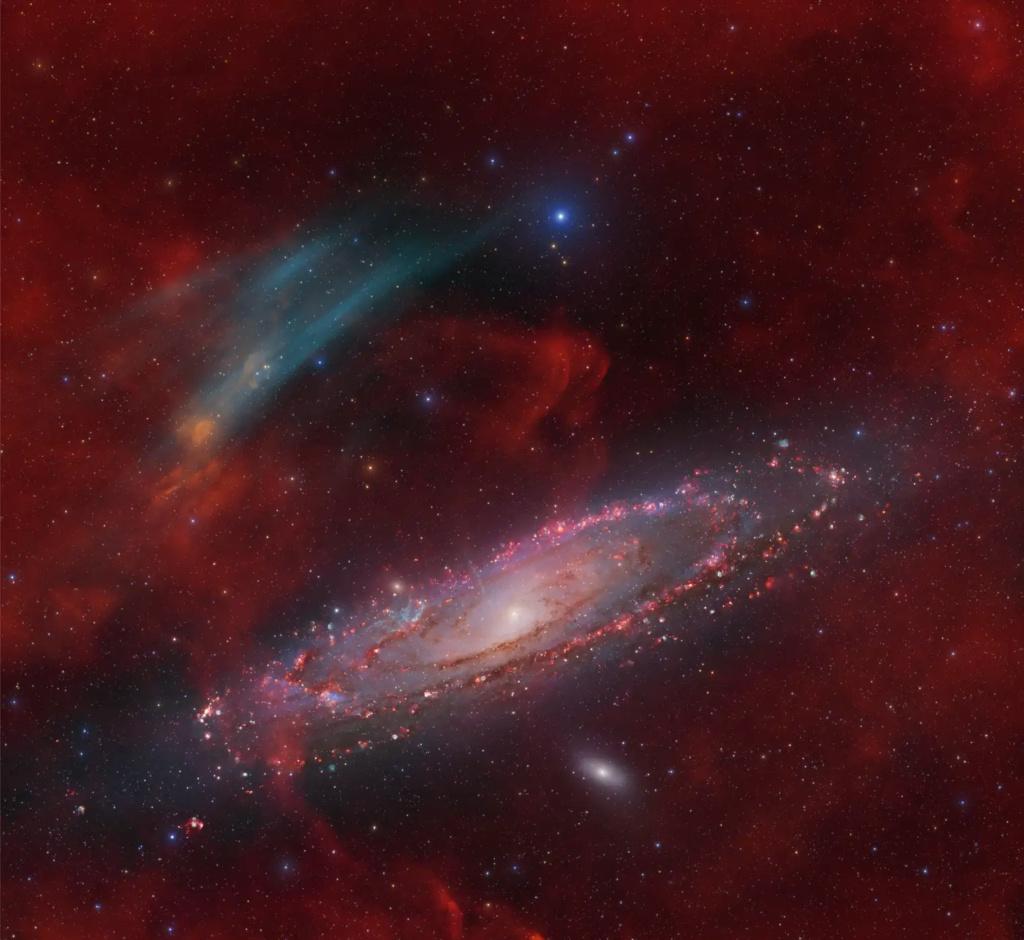! A mysterious cosmic cloud has been discovered next to the Andromeda Galaxy and no one knows what it is

It was unexpected: near the Andromeda galaxy, yet studied for centuries, amateur astronomers discovered a huge cloud of gas. And it doesn't look like any known astronomical object!
Its first known written mention dates back to 964, more than a millennium before: the Andromeda galaxy , also designated as M31, was one of the first deep sky objects to be studied in detail. Visible to the naked eye on particularly clear nights in thenorthern hemisphere, this galaxy could be designated as a “neighbor” of ours, being thespiral galaxyclosest to theMilky Way. So much so that it has been the subject of numerous publications, scrutinizing it and detailing its composition. But a new study published in RNAAS reports an astonishing discovery, and above all very unexpected: a strangecloudofgasnever observed before is on the !outskirts of this galaxy. Never seen

top, the image obtained after 48.6 hours of the nebula southeast of m31. below, the confirmation obtained after 85.5 hours.
Late detection caused by its composition
It all started whenastronomersamateurs have carried out various optical surveys in the direction of the Andromeda galaxy , located at 2.55 millionlight yearsfrom U.S. Through the use of different imaging systems, they targeted several lines ofissue, of which Hα, characteristic of thehydrogenionized gas, the main component of most gas clouds, and others less present in nebulae. With 22 nights of observations between August and October 2022 on "various dark observation sites in Lorraine, France", they obtained Hα and O III emission spectra, characteristic of theoxygendoubly ionized, denoted O 2+.
And that's where they saw a large O III emission nebulosity, located one degree southeast of the Andromeda Galaxy . To confirm their discovery, the astronomers took new images, centered on another position. The same cloud appeared, thus revealing that it was not an equipment artifact or was not from astaror of M31 itself. Finally, new confirmations came from different places in the United States, obtained thanks to other astronomers.

the emission arc [o iii] of m31, discovered and colored by the team of astronomers.
As the study explains, this cloudiness "has no obvious emission equivalent in the readings atX-rays,UV, optical, infrared andradioand " has not been previously reported in the literature". A question then remains unanswered: why was this strange cloud not detected before? Astronomers say this is because of its low brightness and wide angular size, making it difficult to detect with most imaging systems.
The authors then discuss the possible origin of the cloud, without concluding on a preferred scenario. It could be a planetary nebula , as the filamentous structures of the nebulosity resemble it. But the abundance ratio of doubly ionized oxygen to ionized hydrogen implies a temperature above 60,000Kelvins, which no surrounding astronomical object could generate.
Then there remains the hypothesis of aremanentofsupernova which, this time, may well create the right ratio of abundance. But such a scenario does not explain the absence of coincident radio or UV emissions. Finally, an interaction between theandromeda galaxyand the Milky Way could create cloudiness similar to that observed. But there again, problem: the cloud is far too close to M31, in its very stellar halo ! The study concludes on the need to know the radial velocity of the cloud which would make it possible to know more about its interactions with M31 and its halo, it is currently in the process of being obtained.
Source: websites

